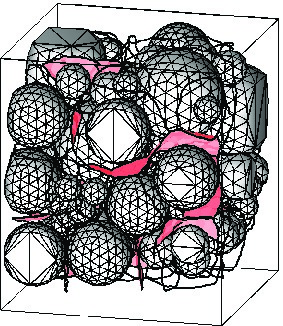
The faces are shown in red and the edges are shown in black.


Glantz, R. and M. Hilpert (2011). Capillary displacement in totally wetting and infinitely long right prisms. Multiscale Modeling and Simulation. DOI. 10.1137/100786472.
Glantz, R., and M. Hilpert (2008). Tight dual models of pore spaces. Advances in Water Resources 31: 787-806.
Glantz, R., and M. Hilpert (2006). Dual models of two- and three-dimensional porous media. Advances in Water Resources 30: 227-248.
Glantz, R., and M. Hilpert (2004). Generation of two-dimensional pore networks for drainage simulations. Proceedings of the 15th International Conference on Computational Methods in Water Resources in Chapel Hill, North Carolina, USA, June 13-17, 2004, Vol. 1, pp. 3-13.
Hilpert, M., R. Glantz, and C.T. Miller (2003). Calibration of a pore-network model by a pore-morphological analysis. Transport in Porous Media. Transport in Porous Media 51: 267-287.